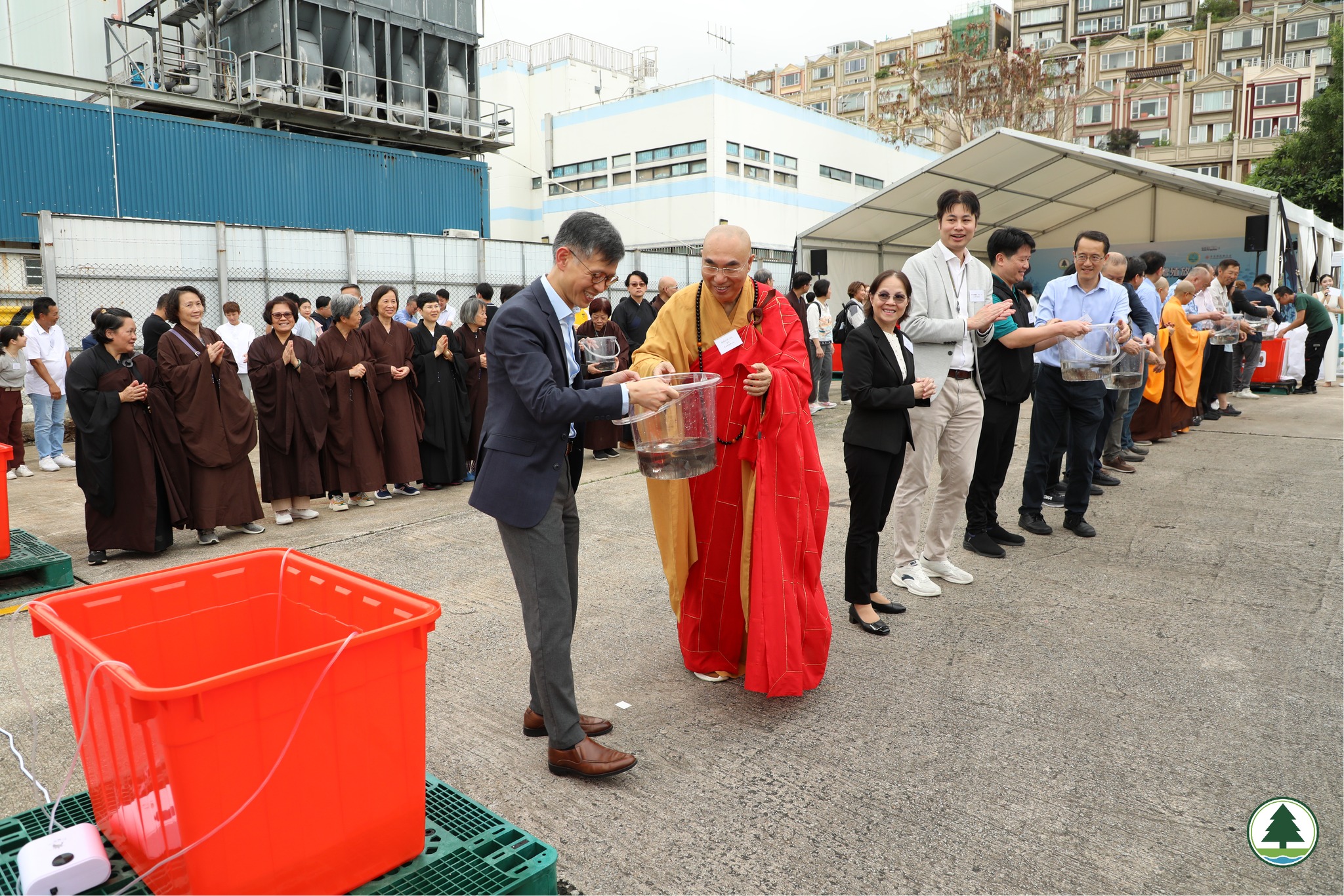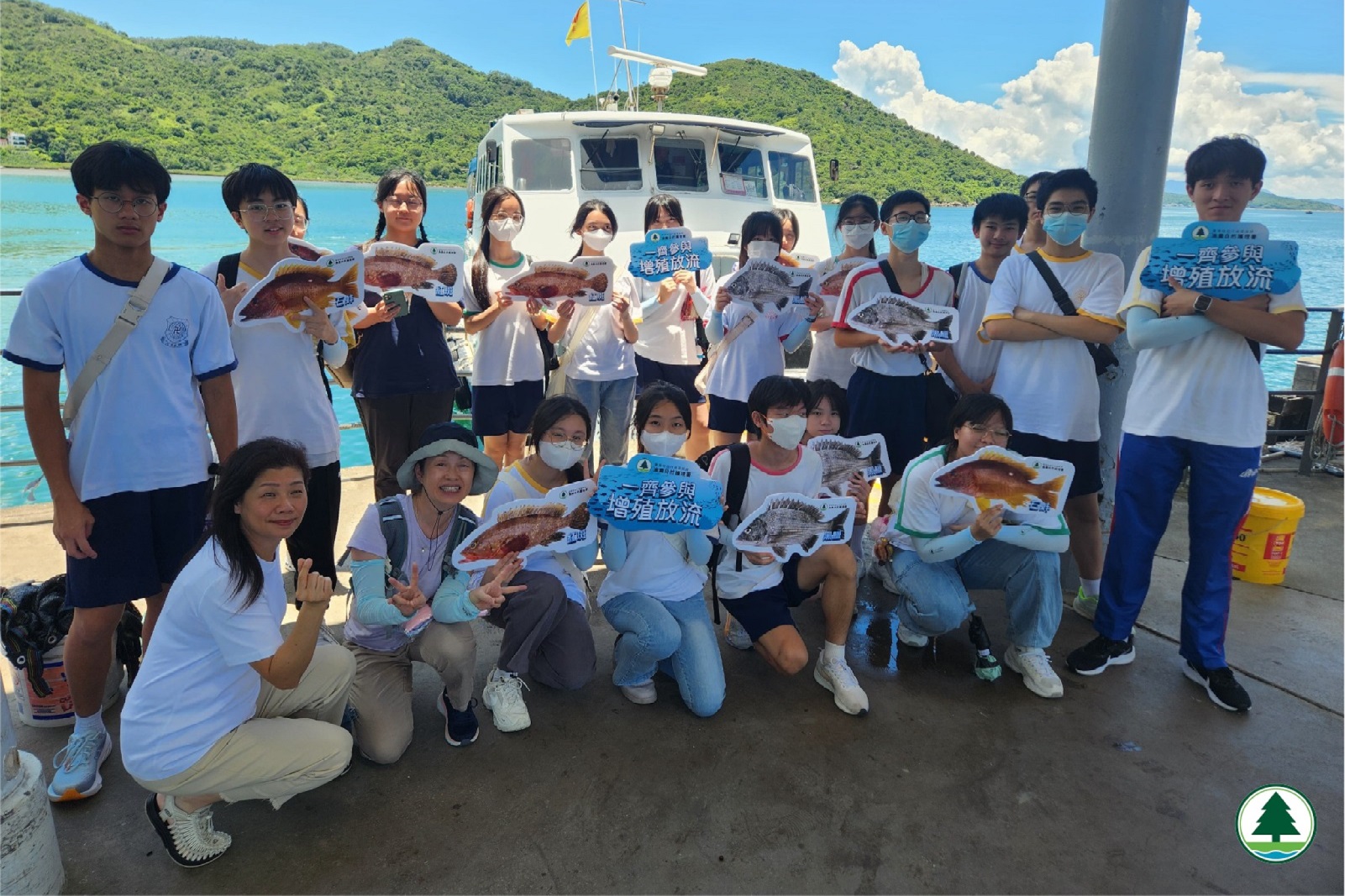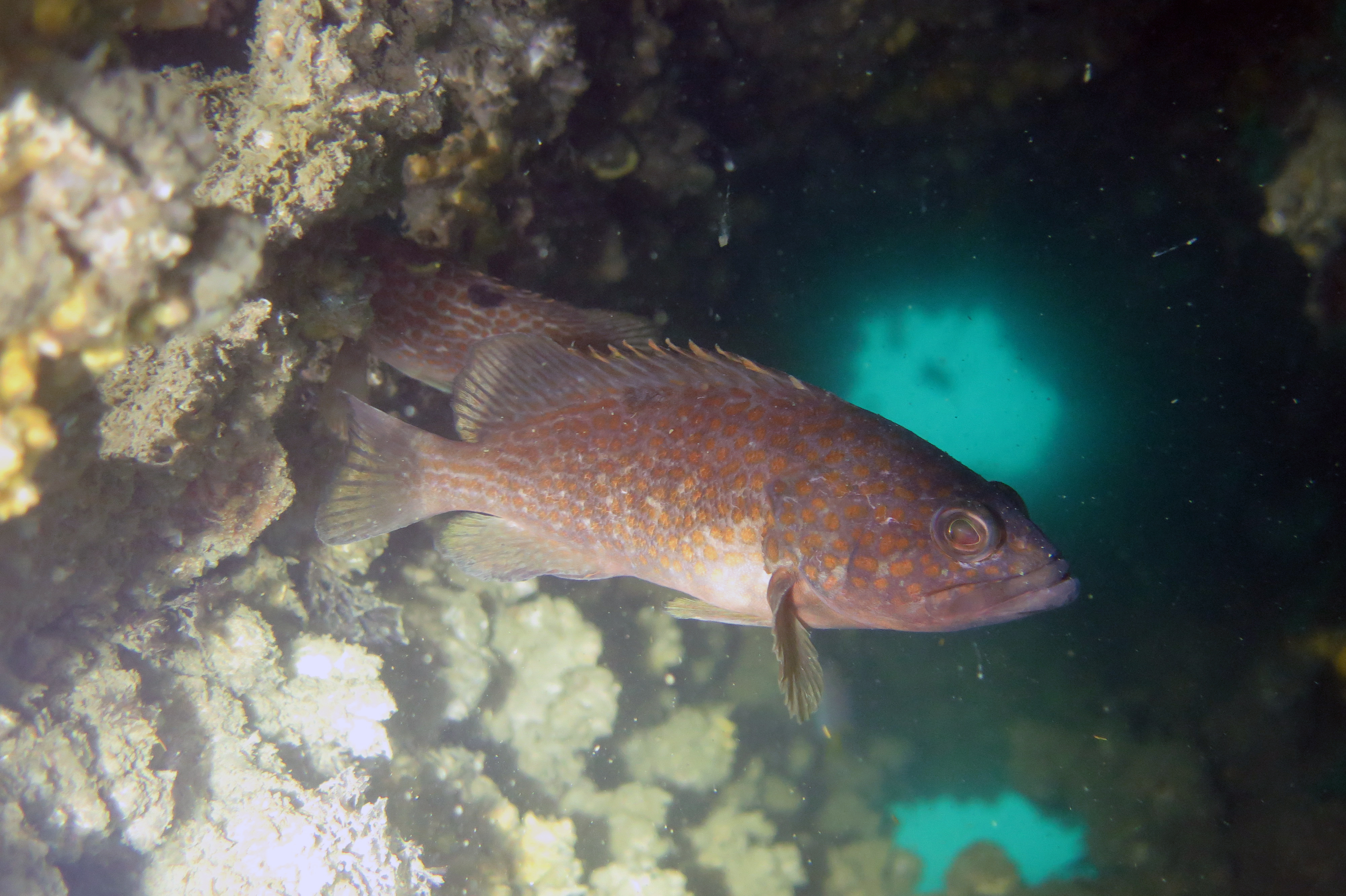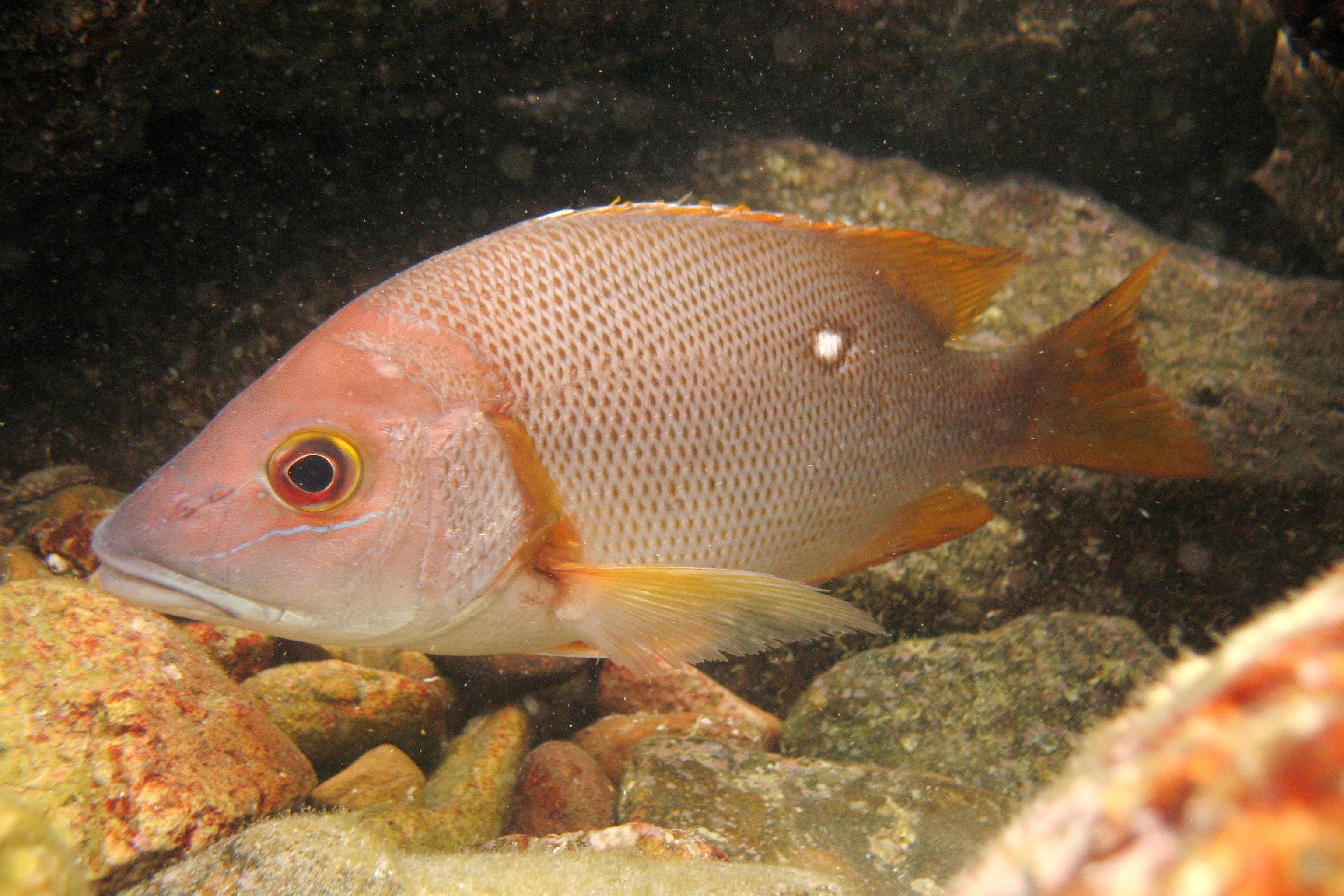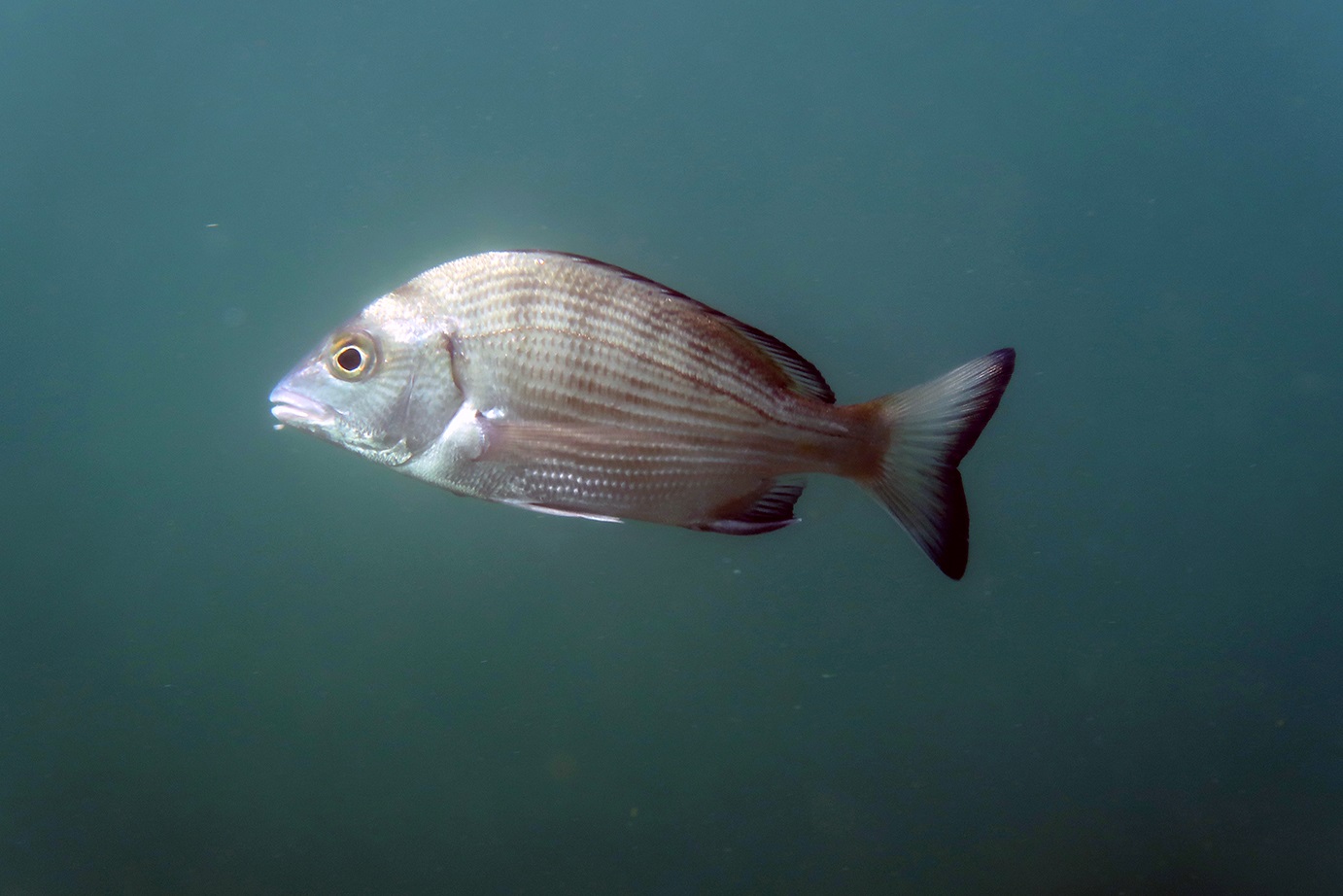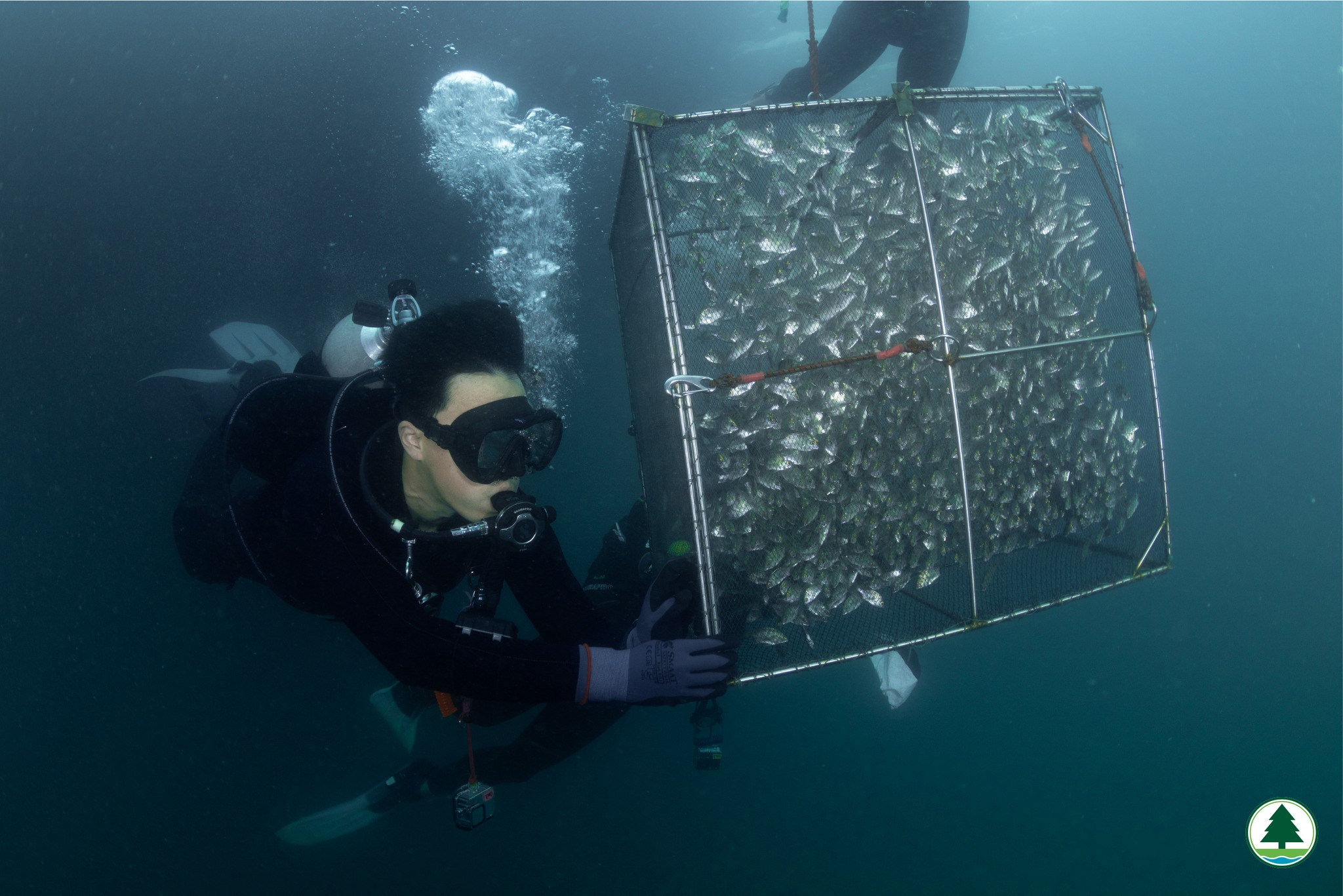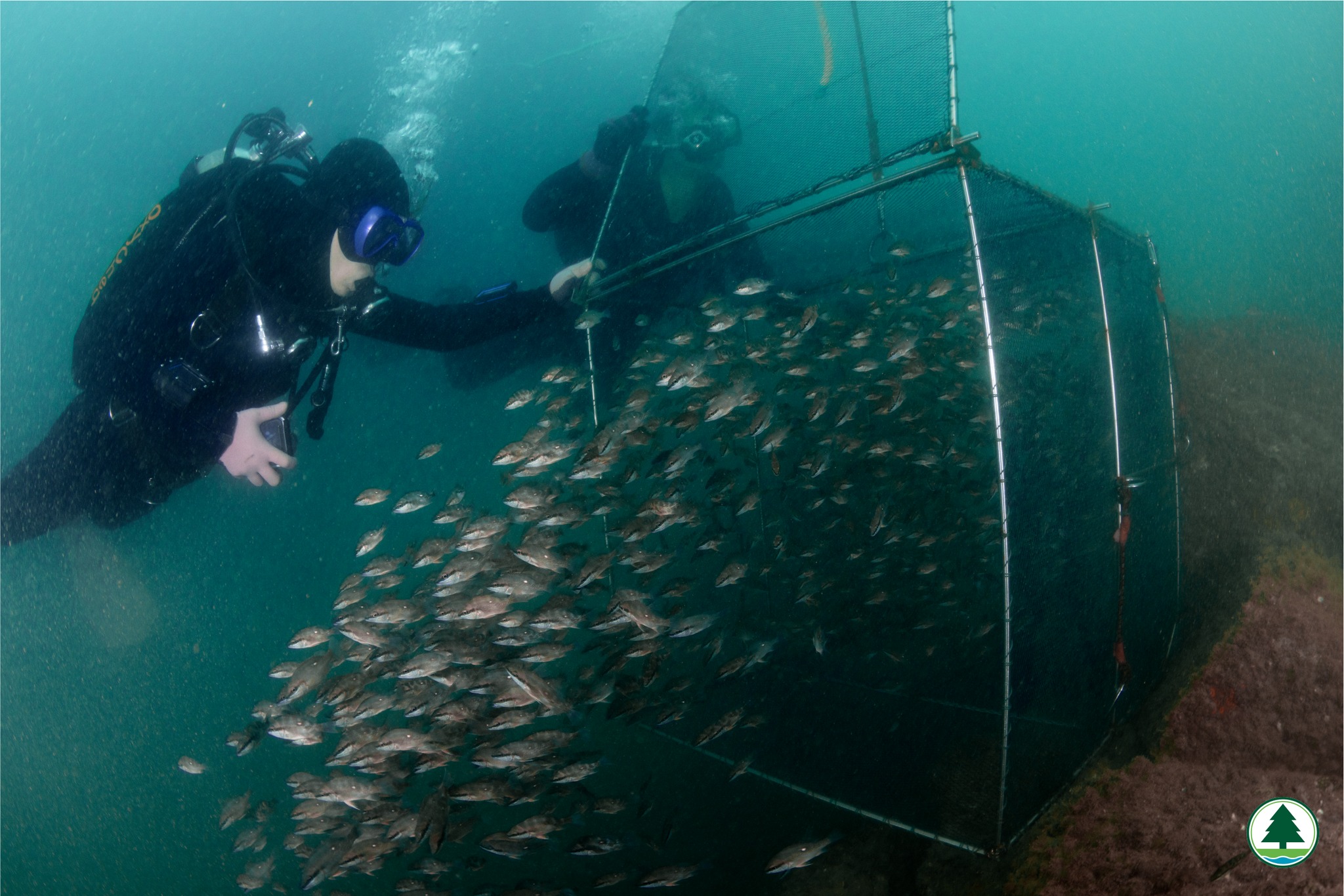Restocking Exercises in Northeast Waters of Hong Kong 2024
Background
To conserve and enhance fisheries resources, as outlined in the Blueprint for the Sustainable Development of Agriculture and Fisheries released in December 2023, a fish restocking exercise was held on 6th June 2024, in alignment with the National Fish Release Day and other nationwide efforts. This event brought together about 100 representatives from local religious groups, fishery bodies, green groups and students (Figures 1-2). An educational event was also organised in July 2024, allowing students to participate in the restocking activity (Figure 3). These initiatives aim to restore and enhance aquatic resources as well as raising public awareness of the conservation of aquatic resources and the need to improve the aquatic habitat.
Restocking Species
In 2024, about 36,000 fish fingerlings were released during the two restocking exercises. The fingerlings included Hong Kong grouper (Epinephelus akaara, Figure 4), star snapper (Lutjanus stellatus, Figure 5) and black seabream (Acanthopagrus schlegelii, Figure 6). All species selected are native and of high commercial value, with populations that have declined in Hong Kong over the past few decades.
Release Sites
Fish fingerlings were released at Yan Chau Tong Marine Park (YCTMP), chosen for its suitable habitats, including natural rocky reefs, boulders and artificial reefs previously deployed by AFCD, which provide protection and sufficient food supply to the fingerlings released. In addition, commercial fishing has been prohibited in this area since 2020, offering further protection for these species.
Preparation and Procedures for Release
The restocking exercises were carefully planned in accordance with relevant guidelines to minimise the impacts on the marine environment. The fish fingerlings were sourced from reputable hatcheries, with broodstock originating from the South China Sea. Prior to release, the fingerlings were tested for common fish diseases and underwent acclimatisation in local waters to ensure optimal conditions for release. On-site, acclimatisation was further facilitated using a custom cage trap immersed in seawater to reduce handling stress. Divers gradually transferred the cage trap from the transport vessel to the underwater site (Figure 7) before releasing the fingerlings (Figure 8).
Monitoring surveys
AFCD has conducted underwater visual surveys post-release to monitor the condition of the released fingerlings and the release sites, using a standardised survey methodology. The information obtained from these surveys will support our planning for future resources enhancement measures.
AFCD restocks fish on National Fish Releasing Day 2024 (video)

